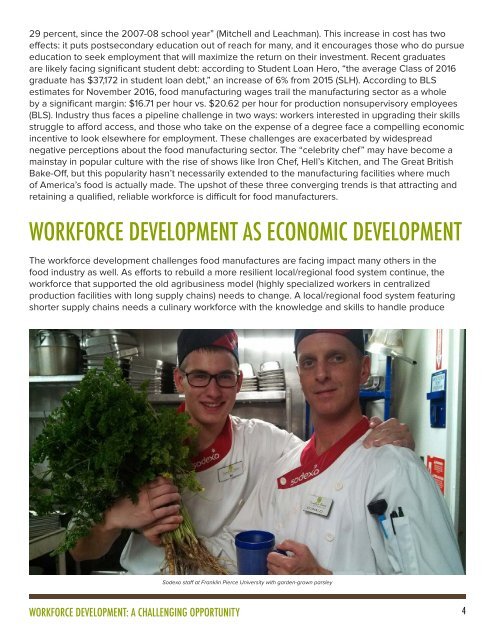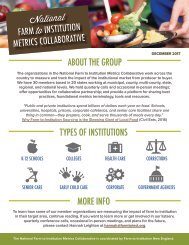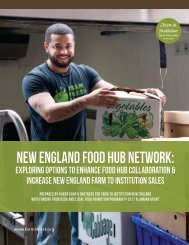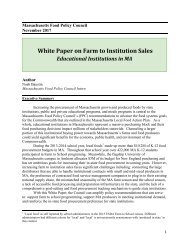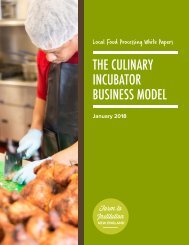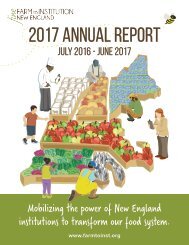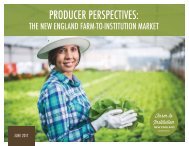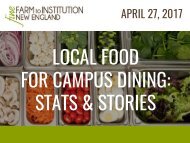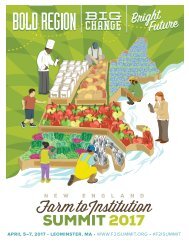FINE Workforce Dev White Paper
You also want an ePaper? Increase the reach of your titles
YUMPU automatically turns print PDFs into web optimized ePapers that Google loves.
29 percent, since the 2007-08 school year” (Mitchell and Leachman). This increase in cost has two<br />
effects: it puts postsecondary education out of reach for many, and it encourages those who do pursue<br />
education to seek employment that will maximize the return on their investment. Recent graduates<br />
are likely facing significant student debt: according to Student Loan Hero, “the average Class of 2016<br />
graduate has $37,172 in student loan debt,” an increase of 6% from 2015 (SLH). According to BLS<br />
estimates for November 2016, food manufacturing wages trail the manufacturing sector as a whole<br />
by a significant margin: $16.71 per hour vs. $20.62 per hour for production nonsupervisory employees<br />
(BLS). Industry thus faces a pipeline challenge in two ways: workers interested in upgrading their skills<br />
struggle to afford access, and those who take on the expense of a degree face a compelling economic<br />
incentive to look elsewhere for employment. These challenges are exacerbated by widespread<br />
negative perceptions about the food manufacturing sector. The “celebrity chef” may have become a<br />
mainstay in popular culture with the rise of shows like Iron Chef, Hell’s Kitchen, and The Great British<br />
Bake-Off, but this popularity hasn’t necessarily extended to the manufacturing facilities where much<br />
of America’s food is actually made. The upshot of these three converging trends is that attracting and<br />
retaining a qualified, reliable workforce is difficult for food manufacturers.<br />
WORKFORCE DEVELOPMENT AS ECONOMIC DEVELOPMENT<br />
The workforce development challenges food manufactures are facing impact many others in the<br />
food industry as well. As efforts to rebuild a more resilient local/regional food system continue, the<br />
workforce that supported the old agribusiness model (highly specialized workers in centralized<br />
production facilities with long supply chains) needs to change. A local/regional food system featuring<br />
shorter supply chains needs a culinary workforce with the knowledge and skills to handle produce<br />
Sodexo staff at Franklin Pierce University with garden-grown parsley<br />
WORKFORCE DEVELOPMENT: A CHALLENGING OPPORTUNITY<br />
4


